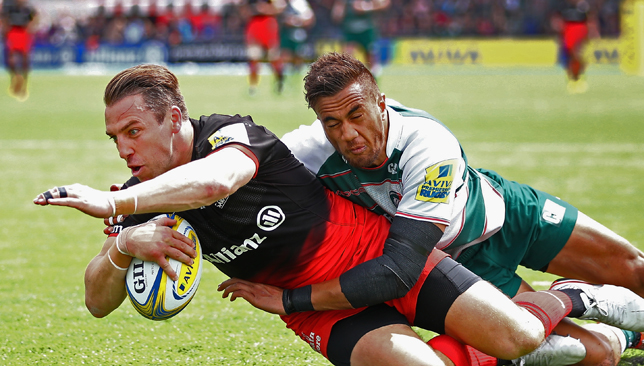
These days a Saracens loss is as rare as a hen’s tooth, but the Londoners’ latest triumph against Leicester in the Premiership semi-finals was particularly poignant.
Not only did Mark McCall’s men put a mind-blowing 44 points on one of the top four sides in the league (boasting the talents of Manu Tuilagi and Vereniki Goneva) but they also made a clear statement that England’s new superpower has arrived.
For the best part of a decade Leicester were England’s pride and joy. From 2000-2010 the Welford Road outfit won six Premiership titles, two European Cups and half of England’s team at any point in this time would play their club rugby in the famous green, white and red stripes.
An easy comparison to make is in the second-row. In George Kruis and Maro Itoje England have finally found a club second-row partnership to rival that of Tigers stalwarts Martin Johnson and Ben Kay. What the former duo may lack in raw aggression, they make up for in vastly superior pace and athleticism – key components of the modern game.
However, it is not just the Saracens’ growing contingent of English internationals that other clubs have to be wary of.
Over the past four seasons the rest of the squad has developed invaluable experience of playing high-pressure matches in front of 80,000-plus crowds in their Wembley fixtures, while their success in Europe gives them the edge over top-four Premiership rivals when it comes to knockout rugby.
2 - @Saracens have lost just two of their last eight against Leicester Tigers (W4, D2) and haven't lost at home to Tigers since 2012. Edge.
— OptaJonny (@OptaJonny) May 21, 2016
The evolution of Saracens’ playing style has in many ways been emblematic of their standing in the world game. After a significant cash injection from South African businessman Johan Rupert in 2008, they invested in foreign talent and employed a direct brand of rugby, which yielded results, but with few plaudits due to its one-dimensional nature.
Fast-forward eight years and Saracens have lit up the last two Premiership seasons with aesthetically-pleasing, running rugby from largely English-qualified talent. This growing dependency on their academy is perhaps the biggest indicator that Saracens are here to stay at the top table, with the next generation waiting in the wings to propel the club to new success.
The on-field results have been matched by an equally impressive effort by the team behind the scenes at Allianz Park. The club has developed a global network of feeder clubs, boast huge financial resources, impressive sponsorship injections and own their own stadium in London. This set-up is the envy of every other team in the world and further solidifies their foundations as an elite side.
Even in the fields of technology and player welfare Saracens are ahead of the pack. In 2013 they debuted rugby’s first artificial pitch and such was the success of it from both an economical and playing perspective, several other clubs quickly followed suit.
The next big task is to convert their success on the pitch into a higher average attendance at home matches, which so far has not been impressive. However, if the team can maintain their new style, perhaps a higher percentage of the 80,000 fans who turn up twice a year to watch them at Wembley, will start making their way to their Barnet HQ on a more regular basis.
Saracens take on Exeter in the Premiership final and while the Chiefs will be keen to put on a show in their first final, it is difficult to look beyond a European and domestic double for the all-conquering Men in Black.